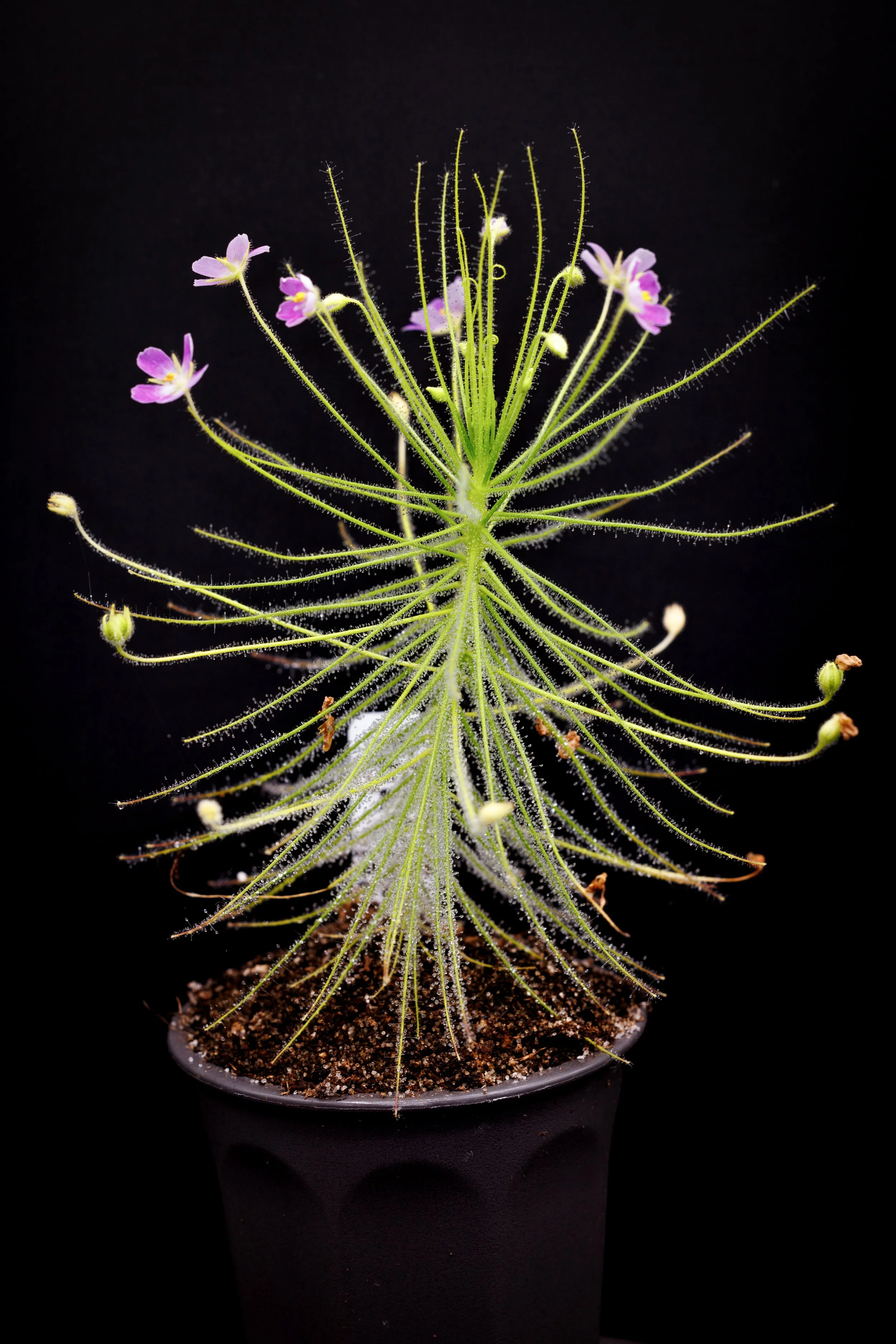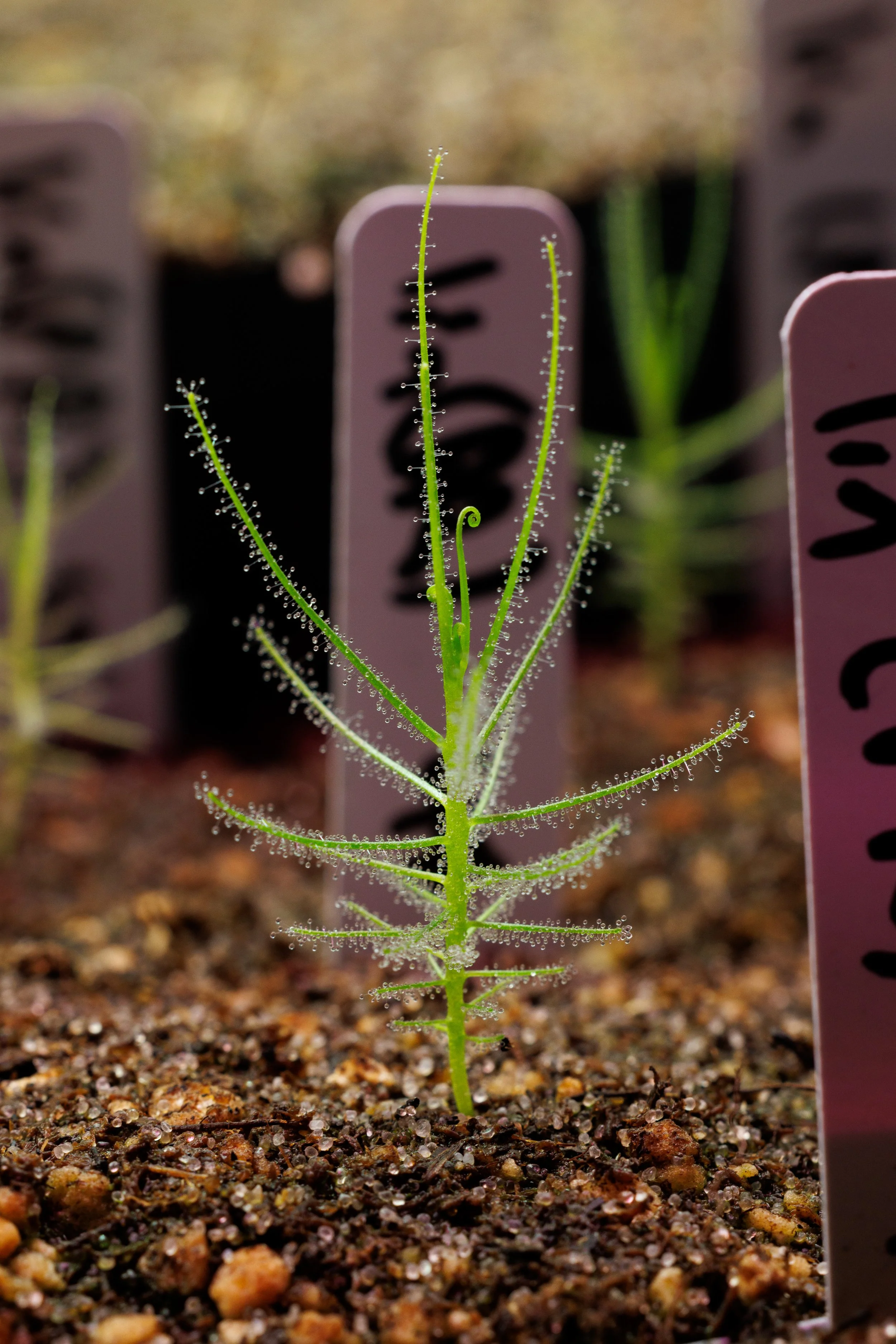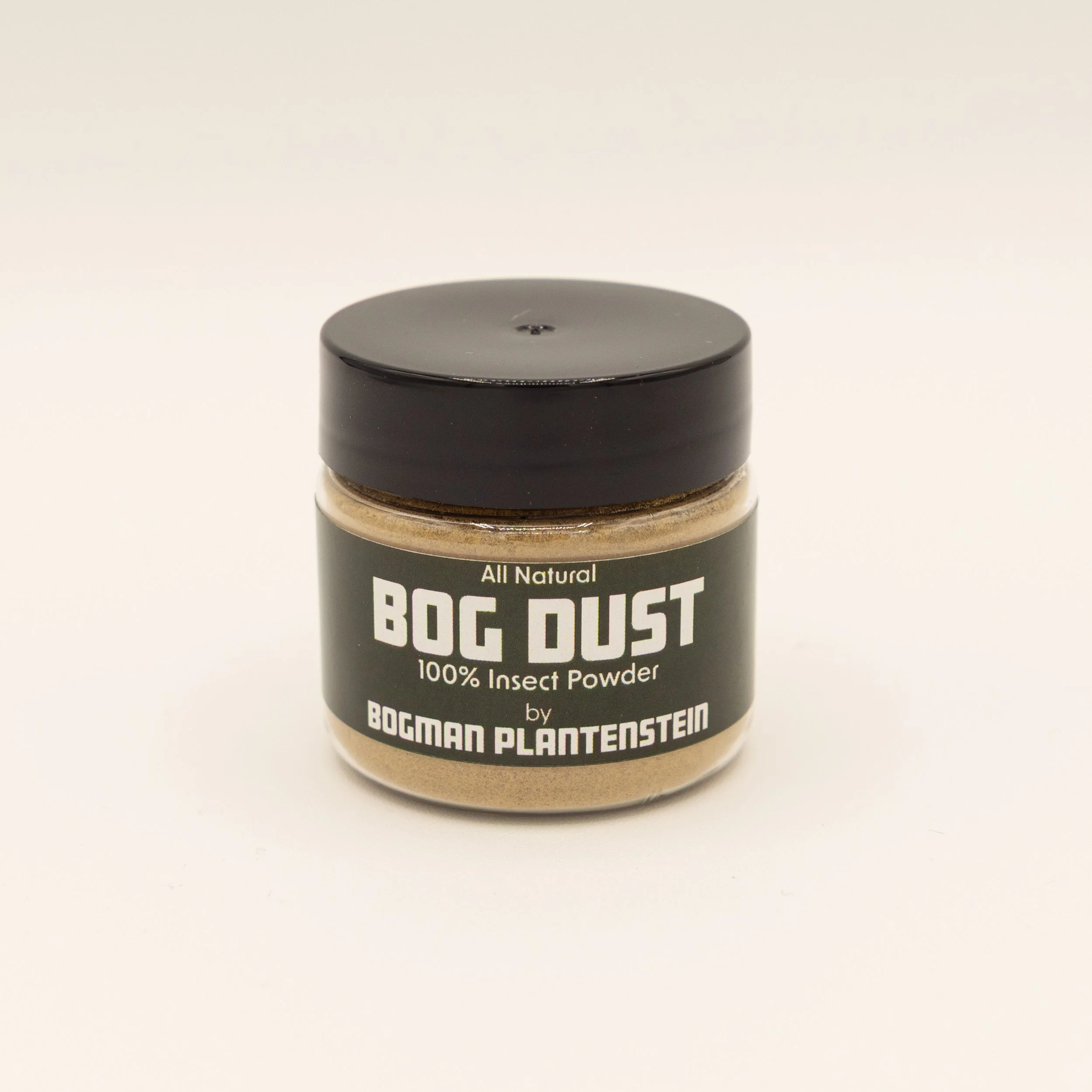 Image 1 of 6
Image 1 of 6

 Image 2 of 6
Image 2 of 6

 Image 3 of 6
Image 3 of 6

 Image 4 of 6
Image 4 of 6

 Image 5 of 6
Image 5 of 6

 Image 6 of 6
Image 6 of 6







Byblis liniflora (Phillips Range)
Description
Byblis (also called Rainbow Plants) are a beautiful genus of carnivorous plants that have dew covered leaves that glisten in the light. Most grow a tall or scrambling stem with elongated leaves covered in translucent hairs that secrete a dewy mucilage. Byblis evolved carnivory independently of all the other sticky carnivores and are the only members of their entire plant family.
These are especially beautiful and unique amongst the carnivorous plants! This species is Byblis liniflora which is an annual species that grows incredibly fast, produces beautiful purple flowers that readily self-pollinate, then gradually dies after months of flowering. It can be regrown from seed quite easily every year to build up a small forest of Byblis!
Byblis liniflora (Phillips Range) is a form that grows between 4-8" tall with a beautiful dense, Christmas tree shape. It flowers profusely for months with excellent wide-petaled, purple flowers with light colored centers. I find this form grows larger in high heat and humidity, though it can grow outdoors as well (just smaller and more purple). It originates from the tropical Kimberley region in Western Australia.
Plants will be potted in 2.5”W x 3.5”H pots and will be roughly 1-2” tall. They must be shipped while small to avoid damage. If growing outdoor, slowly acclimate to sun and low humidity over several days.
Growing Information
Climate: Temperatures from 60-100F, prefers high humidity but can adapt to lower humidity. These love heat and grow incredibly fast when kept hot.
Light: Part Sun or 20W per sq ft LED light.
Water: Distilled or Reverse Osmosis water. Sitting in 0.5”-2” of water using tray method.
Soil: 40% Peat Moss: 40% Sand: 20% Perlite or other well draining peat + sand mixes. Rinse media with distilled or reverse osmosis water to remove excess salts.
Feeding: Plants outdoors will catch lots of flies on their own. Feed Insect Powder or roughly 400ppm foliar fertilization if they are not catching enough or if growing indoors. The roots can also be fertilized lightly.
Description
Byblis (also called Rainbow Plants) are a beautiful genus of carnivorous plants that have dew covered leaves that glisten in the light. Most grow a tall or scrambling stem with elongated leaves covered in translucent hairs that secrete a dewy mucilage. Byblis evolved carnivory independently of all the other sticky carnivores and are the only members of their entire plant family.
These are especially beautiful and unique amongst the carnivorous plants! This species is Byblis liniflora which is an annual species that grows incredibly fast, produces beautiful purple flowers that readily self-pollinate, then gradually dies after months of flowering. It can be regrown from seed quite easily every year to build up a small forest of Byblis!
Byblis liniflora (Phillips Range) is a form that grows between 4-8" tall with a beautiful dense, Christmas tree shape. It flowers profusely for months with excellent wide-petaled, purple flowers with light colored centers. I find this form grows larger in high heat and humidity, though it can grow outdoors as well (just smaller and more purple). It originates from the tropical Kimberley region in Western Australia.
Plants will be potted in 2.5”W x 3.5”H pots and will be roughly 1-2” tall. They must be shipped while small to avoid damage. If growing outdoor, slowly acclimate to sun and low humidity over several days.
Growing Information
Climate: Temperatures from 60-100F, prefers high humidity but can adapt to lower humidity. These love heat and grow incredibly fast when kept hot.
Light: Part Sun or 20W per sq ft LED light.
Water: Distilled or Reverse Osmosis water. Sitting in 0.5”-2” of water using tray method.
Soil: 40% Peat Moss: 40% Sand: 20% Perlite or other well draining peat + sand mixes. Rinse media with distilled or reverse osmosis water to remove excess salts.
Feeding: Plants outdoors will catch lots of flies on their own. Feed Insect Powder or roughly 400ppm foliar fertilization if they are not catching enough or if growing indoors. The roots can also be fertilized lightly.


